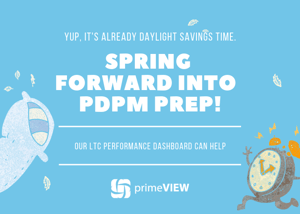Traditionally, additional revenue is a good thing. However, things aren’t always what they seem. Shortly after the Patient Driven Payment Model was implemented, skilled nursing facilities and nursing homes started reporting boosts in reimbursement. But many analysts are urging providers not to get used to the increased payments.
“The illusion of PDPM budget-neutrality is already over,” writes Michael Zimmet, President and CEO of Zimmet Healthcare Services Group. Zimmet contributed his thoughts on the future of skilled nursing for a January 2020 article in Skilled Nursing News. “We should enjoy the largesse while it lasts,” he continues, “but [we should] prepare for the inevitable correction long before 2020’s back-to-school sales are over.”
But why is PDPM leading to payment boosts in the first place? And what does that mean for future reimbursements?
When New Patients Aren’t New Patients
When the Patient Driven Payment Model was rolled out, most skilled nursing facilities and nursing homes saw an immediate boost in reimbursements. This was due to CMS counting all residents of a care community as new admissions, regardless of how long they had been already been there. Understandably, this rate boost won’t be replicated in the future.
Be Prepared for Inevitable Rate Adjustments
It seems that 9 is a magic number. According to Zimmet Healthcare Services Group, nine out of ten skilled nursing facilities saw a reimbursement boost after PDPM went into effect. On average, SNFs saw an increase of 9 percent or more in Medicare reimbursement. Because the model was designed to be revenue-neutral, industry experts expect that reimbursement rates will be recalculated soon.
The failed attempt at revenue-neutrality has many concerned that CMS could claw back reimbursements or adjust future payments to recoup losses. After all, the goal of model was to cut back on what it saw as inappropriate spending on therapy services that may not be needed.
Length of Stay Issues: When More Can Still Be Less
While per-diem rates are on the rise, the average length of stay is on the decline. This effectively erases any potential boost from per-day payment increases. In fact, CMS data shows that fee-for-service days have decreased by over 17 percent since 2010. Covered days per skilled nursing admission have also dropped by just over 7 percent.
As patient care and outcomes improve, lengths of stay are going to naturally decrease. Unfortunately, this also means that reimbursement will, as well.
What You Can Do to Protect Your Community
The best way to optimize your Medicare reimbursements is to check and double-check your data. Make sure that every diagnosis is captured and reported accurately so you don’t leave money on the table. Inaccurate recording can lead to missed Medicare payment opportunities.
PDPM was designed to be revenue-neutral. CMS didn’t plan to spend any more under this model than it did before. But that’s exactly what is happening, and we don’t expect it to keep happening for long.
/Prime-Care-Technologies-Logo.png?width=191&height=55&name=Prime-Care-Technologies-Logo.png)

